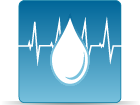1,1,2-Trichloroethane
CASRN 79-00-5 | DTXSID5021380
- IRIS Summary (PDF) (13 pp, 115 K)
On this page:
Noncancer Assessment
Reference Dose for Oral Exposure (RfD) (PDF) (13 pp, 115 K) Last Updated: 09/26/1988
| System | RfD (mg/kg-day) | Basis | PoD | Composite UF | Confidence |
|---|---|---|---|---|---|
| Immune, Hematologic | 4 x 10 -3 | Clinical serum chemistry (effects on erythrocytes and depressed humoral immune status) |
NOAEL
:
3.9
mg/kg-day |
1000 | Medium |
Reference Concentration for Inhalation Exposure (RfC) (PDF) (13 pp, 115 K)
Not assessed under the IRIS Program.
Cancer Assessment
Weight of Evidence for Cancer (PDF)
(13 pp, 115 K)
Last Updated: 03/31/1987
| WOE Characterization | Framework for WOE Characterization |
|---|---|
| C (Possible human carcinogen) | Guidelines for Carcinogen Risk Assessment (U.S. EPA, 1986) |
- Hepatocellular carcinomas and pheochromocytomas in one strain of mice forms the basis for this classification. Carcinogenicity was not shown in rats. 1,1,2-Trichloroethane is structurally related to 1,2-dichloroethane, a probable human carcinogen.
- This may be a synopsis of the full weight-of-evidence narrative.
Quantitative Estimate of Carcinogenic Risk from Oral Exposure (PDF) (13 pp, 115 K)
Oral Slope Factor:
5.7
x 10-2
per mg/kg-day
Drinking Water Unit Risk:
1.6
x 10-6
per µg/L
Extrapolation Method: Linearized multistage procedure, extra risk
Tumor site(s): Hepatic
Tumor type(s): Hepatocellular carcinoma (NCI, 1978)
Quantitative Estimate of Carcinogenic Risk from Inhalation Exposure (PDF) (13 pp, 115 K)
Inhalation Unit Risk:
1.6
x 10-5
per µg/m3
Extrapolation Method: Linearized multistage procedure, extra risk
Tumor site(s): Hepatic
Tumor type(s): Hepatocellular carcinoma (NCI, 1978)
Other EPA Information
- Human Health Benchmarks for Pesticides (HHBP). This database provides human health benchmarks for pesticides that may be present in drinking water.
- Office of Pesticide Programs Pesticide Chemical Search. This database provides links to health effects information and registration status for pesticides.
- Chemistry Dashboard. This database provides information on chemical structures, experimental and predicted physicochemical, and toxicity data.
Critical Effects
Tumor Sites
Chemical Structure

Synonyms
- Beta-t
- Ethane trichloride
- Ethane, 1,1,2-trichloro-
- NCI-C04579
- RCRA Waste Number U227
- RCRA Waste Number U359
- Trichloroethane
- Trichloroethane, 1,1,2-
- Trojchloroetan(1,1,2)
- Vinyl Trichloride
- beta-Trichloroethane
- 1,1,2-Trichlorethane
- 1,1,2-Trichloroethane
- 1,2,2-Trichloroethane
- 79-00-5



